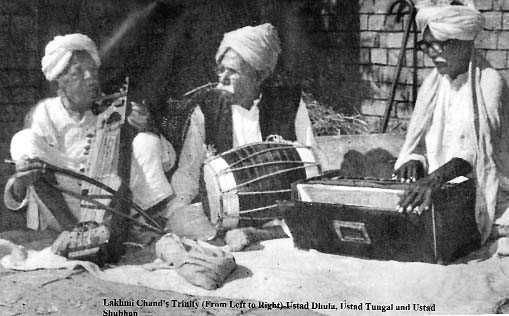Haryana’s folk theatre ‘Saang’
Mohan Maitray
‘Sa-ang’ is a corrupt form of the world ‘Swang’ that is copying of a personality in all respects — form, dress, behaviour and expression, so as to give an original look. ‘Saang’ has been a well adorned folk theatre of Haryana. It has been used both as a medium of amusement and a source for collection of funds for public amenities and welfare.
Western scholars Prof Keeth, Komo, and Hillbrant are of the view that popular folk ‘Swang’ even existed before ritual-ridden Vedic presentations and Sanskrit dramas. Mahaprabhu Valbhacharya is credited with presentation of episodes relating to Lord Krishna in folk music theatre form of ‘Raas Leela’. ‘Ramleela’ was of the same tradition. Folk theatre traditions were followed in different parts of the country under different names — Raas Leela (Braj), Bhavai (Gujarat) Pandvani (MP), Tamasha (Maharashtra), Yakashgaan (Mysore), Pandav dance (Uttarakhand) and Saang (Swang) in Haryana.
An eminent saangi, Mange Ram, has expressed in a poetic way that Krishan Lal was the first to script and perform Saang in 1750. It was a sort of ‘mujra’ where male and female roles were performed by men only. After about 170 years Pandit Deep Chand gave it a new look and form. ‘Saang’ named ‘Raja Bhoj’, ‘Guru Gugga’, ‘Raja Gopi Chand’ introduced by Bansi Lal were popular in 1800. RC Tample in his creation ‘The Legends of Punjab’ of 1884-85 has mentioned the presentation of ‘Saang’ ‘Raja Gopi Chand’ (script Bansi Lal) in Jagadhri. Amba Ram followed this tradition. In the seventeenth century, ‘Saang’ of Ali Bux were very popular in Meerut, Mewar, Ahirbati and Haryana. ‘Saang’ like ‘Tamasha’, ‘Padmavat’, ‘Krishan Leela’ presented literary pursuit along with music and dance. The ‘Saang’ of Shankar Lal and Balak Ram earned appreciation as these were the heartbeats of people and depicted their soothing imaginations.
Pt Deep Chand, a resident of Sonepat district and Patwari by profession, is credited with giving new dimensions to this folk presentation. During middle ages, ‘Saang’ had two forms — Kirtan and Nautanki. The popularity of ‘Saang’ brought Sheki Ram, a devotional singer and preacher, into its fold. The creations of Pt Deep Chand like ‘Jani chor’, ‘Nal-Damyanti’, ‘Raja Bhoj’, ‘Uttanpad’became very popular. Pt. Deep Chand was weighed against coins. Ragni ‘Tuksa neer Pila De’ attracts art- loving people even today. The popularity of ‘Saang’ of Panditji compelled the British to seek his help for recruitment in the army. He was decorated with the title of ‘Rai Sahib’.
Pt Lakshmi Chand was a jewel of this art-form. He didn’t have the privilege of formal education but his god-gifted insights enabled him to compose ragini instantly. He is said to be the founder of the present form of ragini. He composed ragini in local dialects on the themes of Vedanta, love and separation. This description is unique in form and content. In childhood, Lakshmi Chand was attracted towards music after listening to a song of blind singer Man Singh — “Jagat te youn Raenn ka Sapna re”. He used to practise music and dance with ‘sarangi’ player Dhoolia Khan, who remained with him for 20 years.
Pt. Lakshmi Chand contributed about 20 ‘Saang’ — ‘Harish Chander Madnawat’, ‘Bhagat Puran Mal’, ‘Heer-Ranja’, ‘Mira Bai’, ‘Padmavat’, ‘Shahi Lakarhara’, ‘Chander Kiran’ etc. The ‘Saang’ were based on the stories of Puranas and the Mahabharata and popular folk tales. Pandit Lakshmi Chand’s imagination, poetic capability, and sense of music gave these fables a sublime presentation. His songs, mostly relate to social consciousness and devotion. Some critics have raised the issue of vulgarity in content and narration. In presentation, symbolic adaptation is the cover. Pt. Lakshmi Chand’s contribution is unique and a golden page in the history of art and folk culture of Haryana.
Pt. Tule Ram tried his best to safeguard the cultural heritage of his father, Lakshmi Chand. With the passage of time, there had been a change in the use of instruments, postures and duration of ‘Saang’.
(The writer is an educationist and author based in Panchkula).









